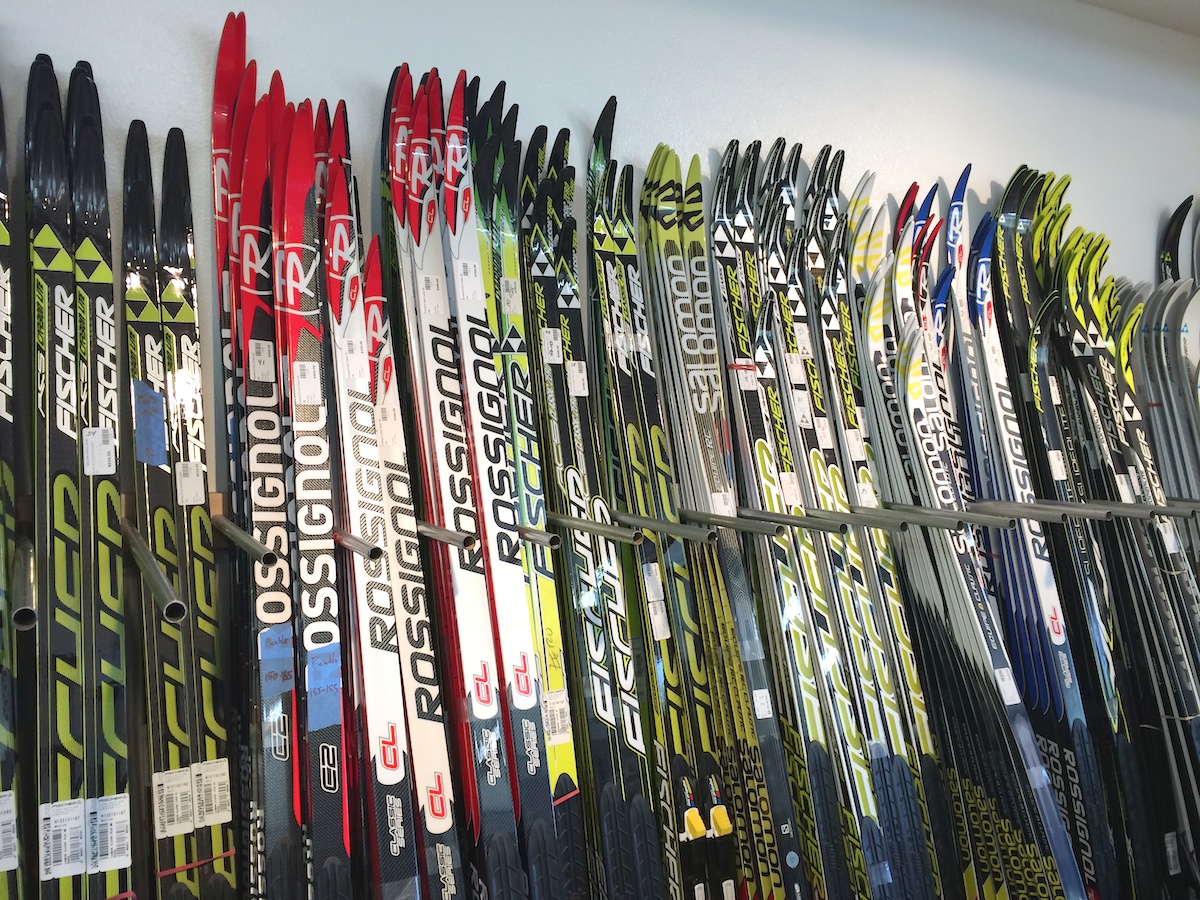The Local newsletter is your free, daily guide to life in Colorado. For locals, by locals.
With ski season upon us, we stopped by Boulder Nordic Sport—the retailer for all of your skinny ski needs—for tips on getting outfitted for classic or skate skis.
1. Get the right fit: You used to pick out Nordic skis by raising your hand to determine the length. Not anymore. “The flex of the ski is way more important than anything else,” says BNS general manager Hennie Kashiwa. Prices start at $200 and go up to $1,000, but a well-fitted pair can last a decade. “With Nordic skiing you really get what you pay for,” he says. “There are not that many gimmicks. If you pay more for something that means it is going to work better.”

2. Use the professionals: BNS’ staff is ridiculously qualified—former coaches, past members of the U.S. ski team—so use them to guide you. “We’ve assembled a dream team of people who not only know about skiing,” Kashiwa says, “they know how to do it better than the rest.”
3. Shop for the conditions: Know where you plan to ski the most to find the perfect skis. For instance, in Colorado’s colder, drier snow, you need a long contact area on the ski to interact with the sharp snow crystals. (If that just went over your head, don’t worry. See No. 2.)
4. Wax often: A new layer of wax can help the slushiest of trails seem better. “It’s way more fun to ski on skis that are well taken care of,” Kashiwa says. BNS will do the work for you at $20 a pop—or the shop has classes to show you how to use a wax bench, iron, scraper, and more at home.
5. Be flexible: Not every bluebird day is ideal for Nordic skiing. “When it is good powder day, go alpine skiing,” Kashiwa says. “But when it is a mediocre powder day, that’s when Nordic skiing is at its best.” In the same way, some temps are better for classic versus skate skis. If it is cold and dry in the morning, the snow will seem like Styrofoam and you’ll like using classic skis in those conditions. In the afternoon, when the snow was warmed, switch to skate skis.
6. Layer up: Don’t dress for the temperature in the parking lot. Nordic skiing is a hefty workout and you’ll sweat through heavy layers quickly. Opt for long underwear and a windbreaker jacket. Even better: splurge for Nordic-specific gear that is wind-resistant in the front, moisture wicking all over, and stretchy in all the right spots. But never wear two pairs of socks. “It’s a terrible idea,” Kashiwa says. “It reduces the amount of control inside the boot because the socks are slipping on each other.”
7. Bundle up: BNS doesn’t sell beginner kits. “We don’t do packages because you’ll end up with something you don’t want,” Kashiwa says. “We just give you 15 percent off whatever you buy as a package. That way we can get people set up with exactly what they need.” In addition to skis, you’ll need boots, bindings, and poles. The more expensive the boot, the lighter and stiffer it will be. Take your time finding a pair that feels good on your foot (a bad fit means blisters and damaged toenails). There are two binding systems, so your boot will dictate which type goes on your ski. (You won’t need to think about this again unless you borrow a friend’s skis.) For poles, avoid aluminum and look for a lightweight and tall pole that doesn’t have much flex (otherwise, you’ll waste energy by pushing down harder into the snow).
8. Be patient: This sport is brutal. It will make you feel out-of-shape, uncoordinated, and clumsy. It will also be one of the best workouts you’ve ever had—in the middle of a pristine snowfield. Enjoy it. “Classic is kind of the golf of skiing,” Kashiwa says. “You’ll spend your whole life working on technique.”
Bonus: Visit a few of 5280’s favorite spots to use our skinny skis—Devil’s Thumb Ranch Nordic Center, Catamount Ranch & Club, and Snow Mountain Ranch.
Follow senior editor Natasha Gardner on Twitter, Instagram, or Pinterest.








